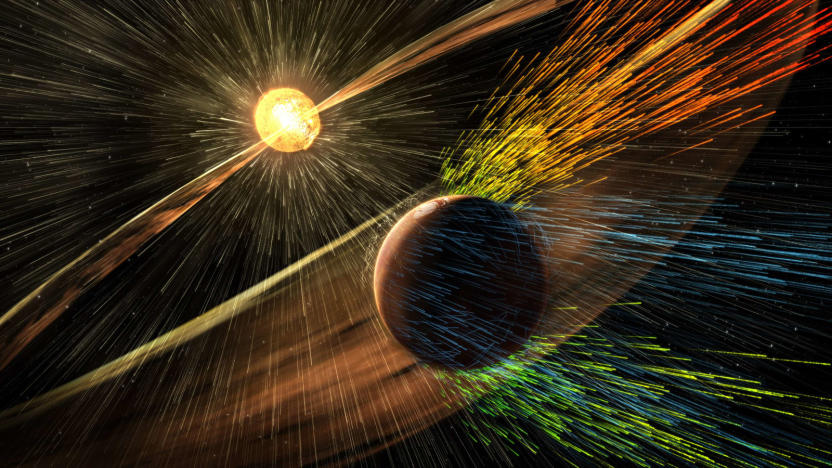lagrange
Latest

NASA proposes guarding Mars' atmosphere with a magnetic shield
Ask scientists why Mars is cold and dead and they'll usually point to the death of its magnetic field some 4.2 billion years ago. Without that protection, solar winds gradually stripped it of most of its atmosphere. A NASA-led team, however, thinks there's still a chance to protect what's left -- and human explorers in the process. The scientists have proposed a magnetic shield that would sit at the L1 Lagrange Point beyond the planet, creating an artificial magnetosphere that would deflect solar winds and incoming radiation. Simulations even suggest that the atmosphere would get thick enough to melt carbon dioxide ice at Mars' northern pole, sparking a greenhouse gas effect that would melt water ice and restore some of Mars' oceans. Needless to say, that would be much friendlier to any long-term visitors.

Researchers find 12 easily captured near-Earth asteroids
Both NASA and Planetary Resources dream of capturing asteroids, but they need viable targets -- many space rocks aren't easily moved. The University of Strathclyde just gave those organizations some help by identifying 12 near-Earth asteroids that are relatively easy to catch. All of them would require velocity changes of less than 1,640 feet per second to fall into orbit around Earth's Lagrangian points, where the gravity balance would let miners and researchers get to work. Don't expect intercept missions anytime soon, though. One of the more accessible targets, 2006 RH120, would have to be nudged in February 2021 to reach orbit in 2026; it will be a long while before any of us sees an asteroid up close.

Trojan asteroid caught circling Earth, the Greeks deny involvement
Hide your kids, hide your wife, there's an asteroid circling Earth's orbit and we're all gonna... be just fine? Yeah, no need to stock up those '60s fallout shelters folks, this approximately 1,000 feet wide space rock is sitting pretty and safe in one of our Lagrange points. The so-called Trojan asteroid, known as 2010 TK7, was uncovered 50 million miles away by the infrared eyes of NASA's Wide-field Infrared Survey Explorer (WISE) telescope, and is the first of its kind to be discovered near our humble planet. Typically, these near-Earth objects (NEOs) hide in the sun's glare, but this satellite's unusual circuit around our world helped WISE and the Canada-France-Hawaii telescope confirm its existence. The finding has our best and brightest giddy with the hope similar NEOs "could make excellent candidates for future robotic or human exploration." Unfortunately, our new planetoid friend's too-high, too-low path doesn't quite cut the space mission mustard. No matter, 2010 TK7 still gets to call "First!"

